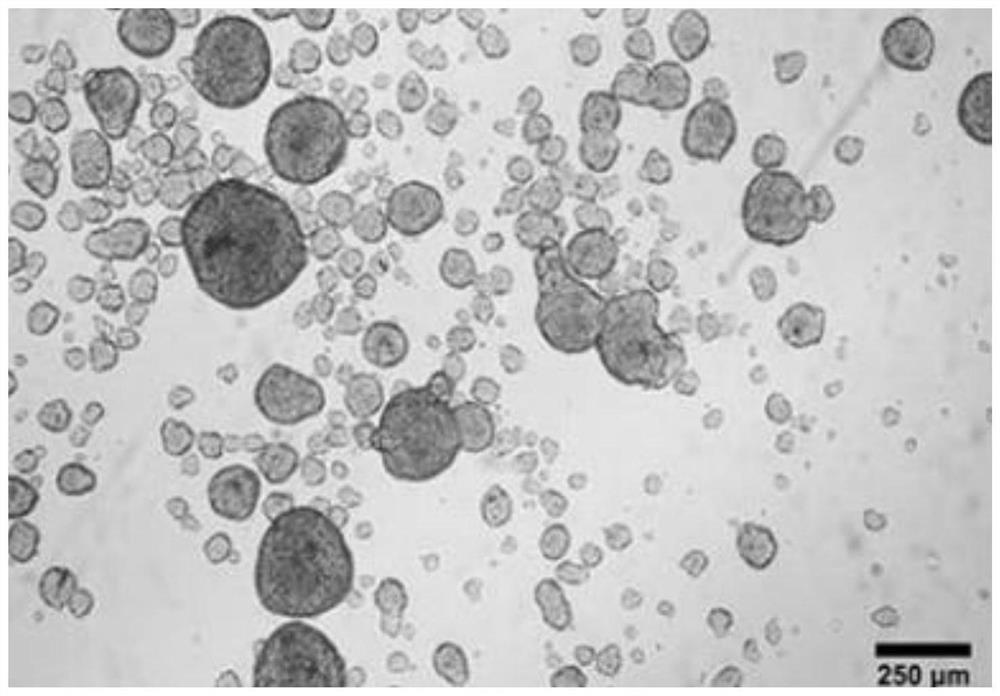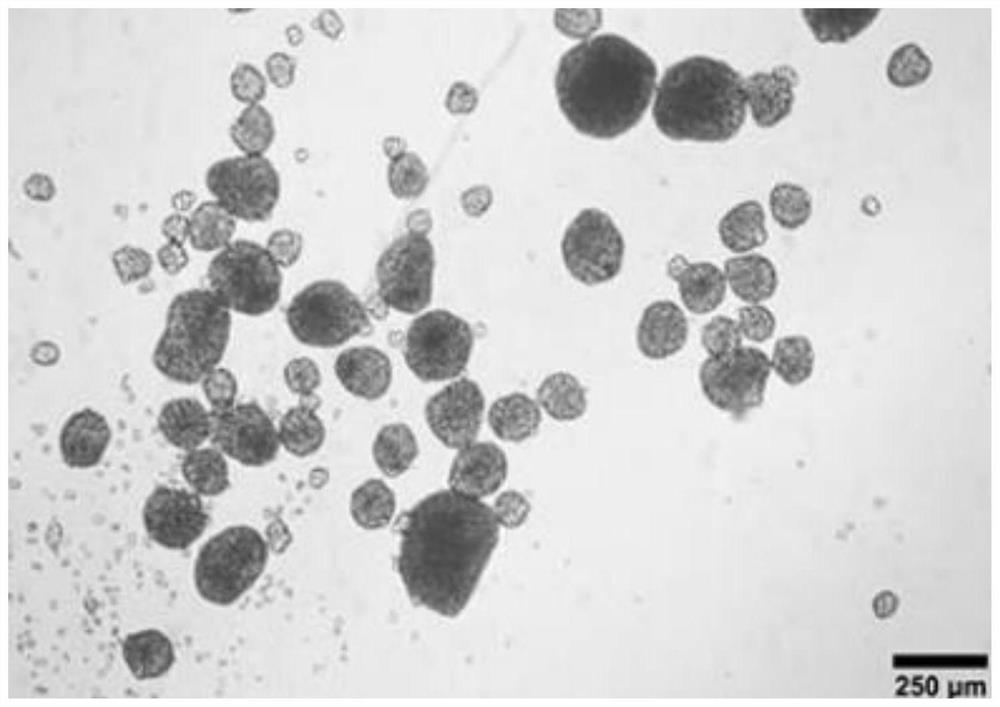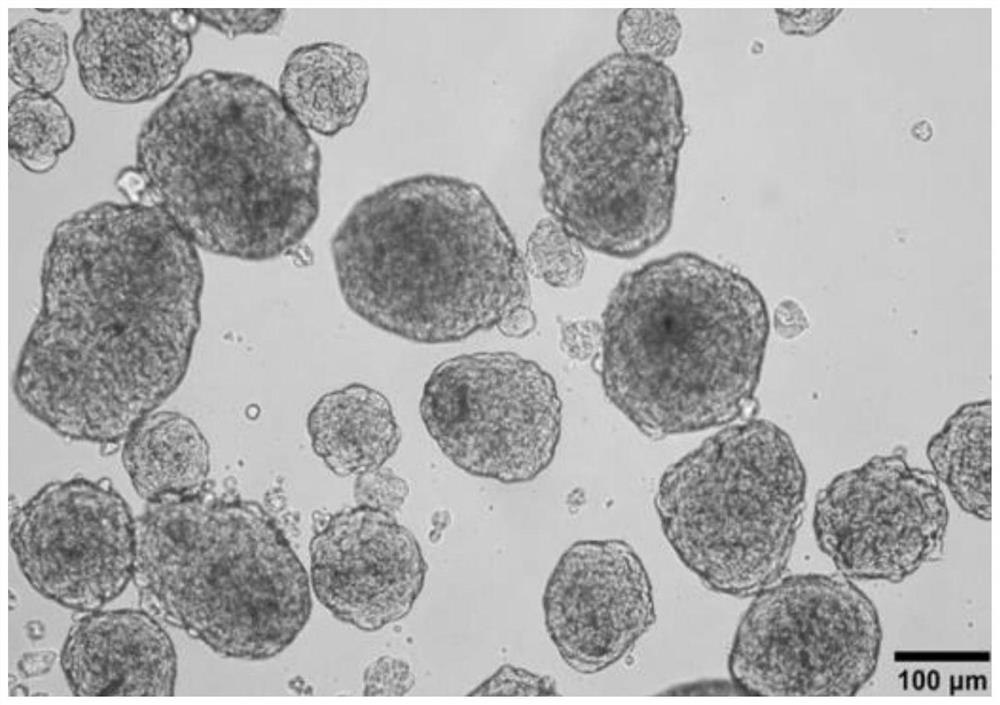Autologous hair growth matrix stem cell culture method for cerebral hemorrhage sequelae of premature infant
A technology for cerebral hemorrhage sequelae and stem cell culture, applied in the field of neural stem cell culture, can solve problems such as restriction and immune system rejection, and achieve the effect of promoting maturation, reducing neurological sequelae, and avoiding re-bleeding
- Summary
- Abstract
- Description
- Claims
- Application Information
AI Technical Summary
Problems solved by technology
Method used
Image
Examples
Embodiment 1
[0058] Example 1 Irrigation of hematoma and collection of bloody cerebrospinal fluid under neuroendoscopy
[0059] Use ultrasound 3D navigation to accurately locate the lateral ventricle, design a small incision, cut the skin, cut the skull with scissors, and puncture the cortex under ultrasound guidance. The irrigation system has two irrigation channels, a scope channel, and a working channel, allowing simultaneous irrigation and collection of fluid.
[0060] After incision of the cortex, one channel is connected to the infusion tube and the other is connected to the opening of the third ventricle. The lavage speed is gravity-related (1.8m suspension), so there is no risk of accidental injury, including complications such as elevated blood pressure. In addition, neurosurgeons constantly monitor fontanelle tension and can open or close the circuit to maintain a steady pressure. The method of collecting cerebrospinal fluid is to use a 50 ml syringe connected to the outflow ch...
Embodiment 2
[0061] Example 2 Cell collection and culture
[0062] The CSF samples were transferred to appropriately sized tubes and centrifuged at 370g for 10 minutes, the supernatant was discarded, and the stem cells were resuspended in neural stem cell medium to maintain the culture at a seeding density of 1 × 10 4 -1×10 5 pcs / mL.
[0063] Neural stem cell culture medium consists of the following components: Neurobasal medium is a basal medium containing EGF 20ng / mL, bFGF 20ng / mL, LIF 10ng / mL, heparin 2μg / mL, B27 supplement (50×, Gibco) 2%, N2 additive (100×, Gibco) 1%, non-essential amino acids (glycine, L-alanine, L-asparagine, L-aspartic acid, glutamic acid, L-proline, L-serine) 0.1 mM each, poly-L-ornithine 20 μg / mL and human placental laminin 20 μg / mL.
[0064] The entire process was carried out in 3D very low adsorption culture flasks (Corning Incorporated, Corning, NY). The medium is changed in half every 3-5 days, and the passage is once every 6-8 days. The specific passage ...
Embodiment 3
[0065] Example 3 Cryopreservation and recovery of subcultured germinal stromal stem cells
[0066] Cryopreservation: Transfer the germinal stromal stem cells cultured to the fifth passage into a centrifuge tube, centrifuge at 1000 rpm for 5 minutes, discard the supernatant, and use the Accutase enzyme solution with a volume ratio of 1:1 and 10 units / minute for the pellet. Digest the mixed digestion solution of the papain solution with mL of papain solution. The digestion time is about 5 minutes. Gently pipetting and then centrifuging at a centrifugal speed of 1000 rpm for 10 minutes. Overhang adjusted to 5×10 6 1 / mL, aliquot into cryopreservation tubes, seal the tubes tightly, place them in the freezer at 4°C for 20 minutes, then place them in the freezer at -20°C for 30 minutes, and then place them in a -30°C low-temperature freezer 1 hour, and finally placed in liquid nitrogen for cryopreservation. The cryopreservation solution is Neurobasal medium containing 8%-12% DMSO b...
PUM
 Login to View More
Login to View More Abstract
Description
Claims
Application Information
 Login to View More
Login to View More - R&D
- Intellectual Property
- Life Sciences
- Materials
- Tech Scout
- Unparalleled Data Quality
- Higher Quality Content
- 60% Fewer Hallucinations
Browse by: Latest US Patents, China's latest patents, Technical Efficacy Thesaurus, Application Domain, Technology Topic, Popular Technical Reports.
© 2025 PatSnap. All rights reserved.Legal|Privacy policy|Modern Slavery Act Transparency Statement|Sitemap|About US| Contact US: help@patsnap.com



